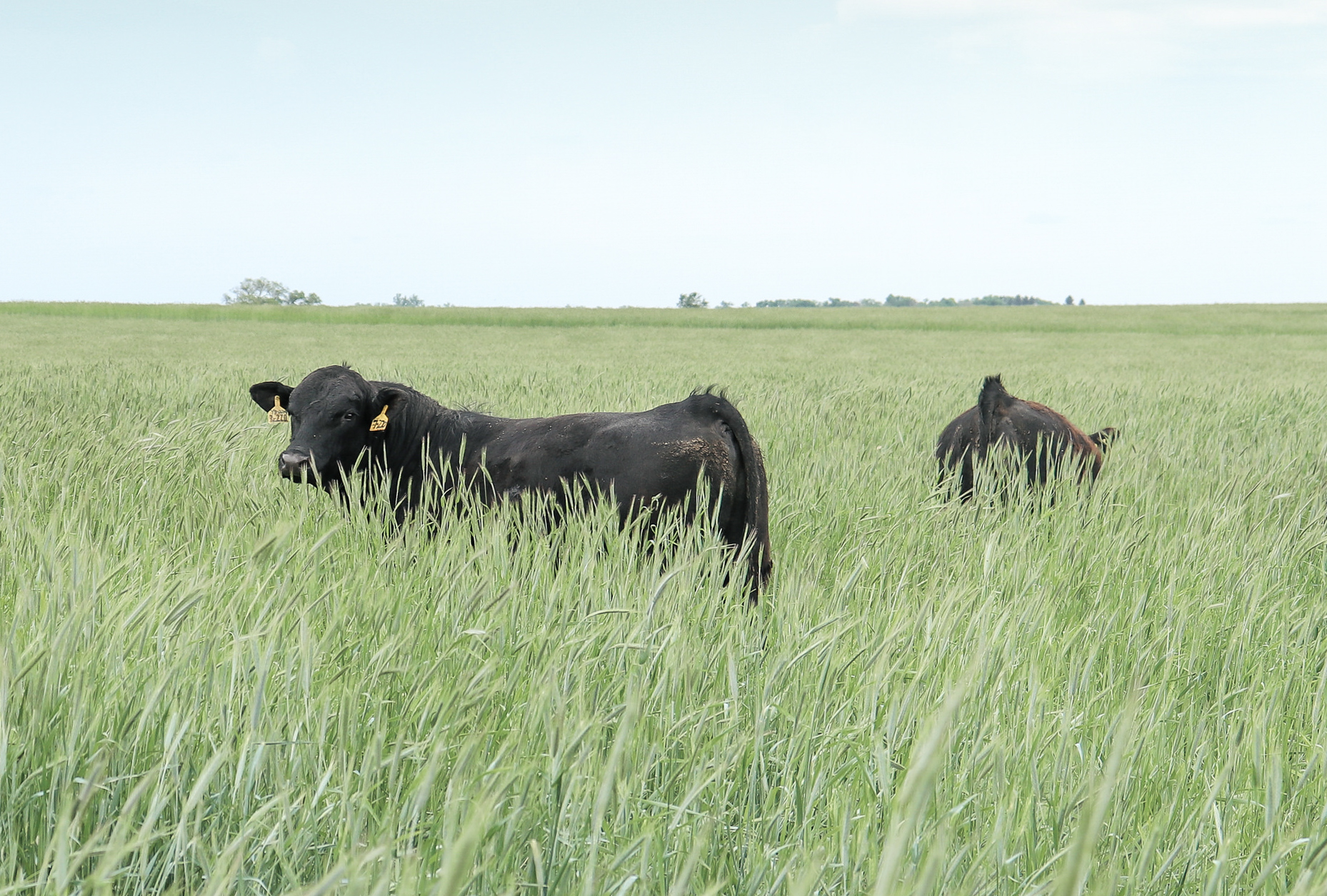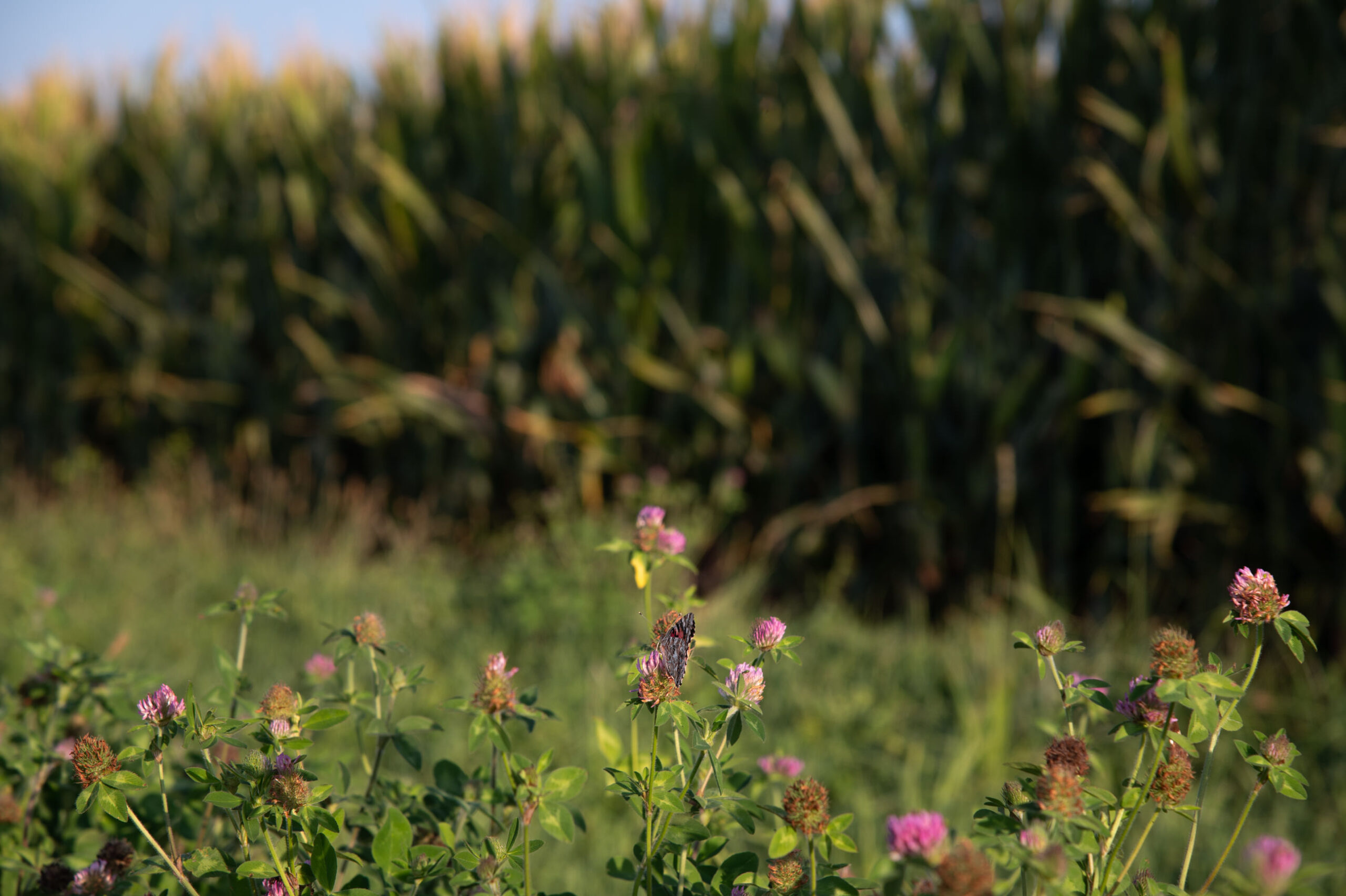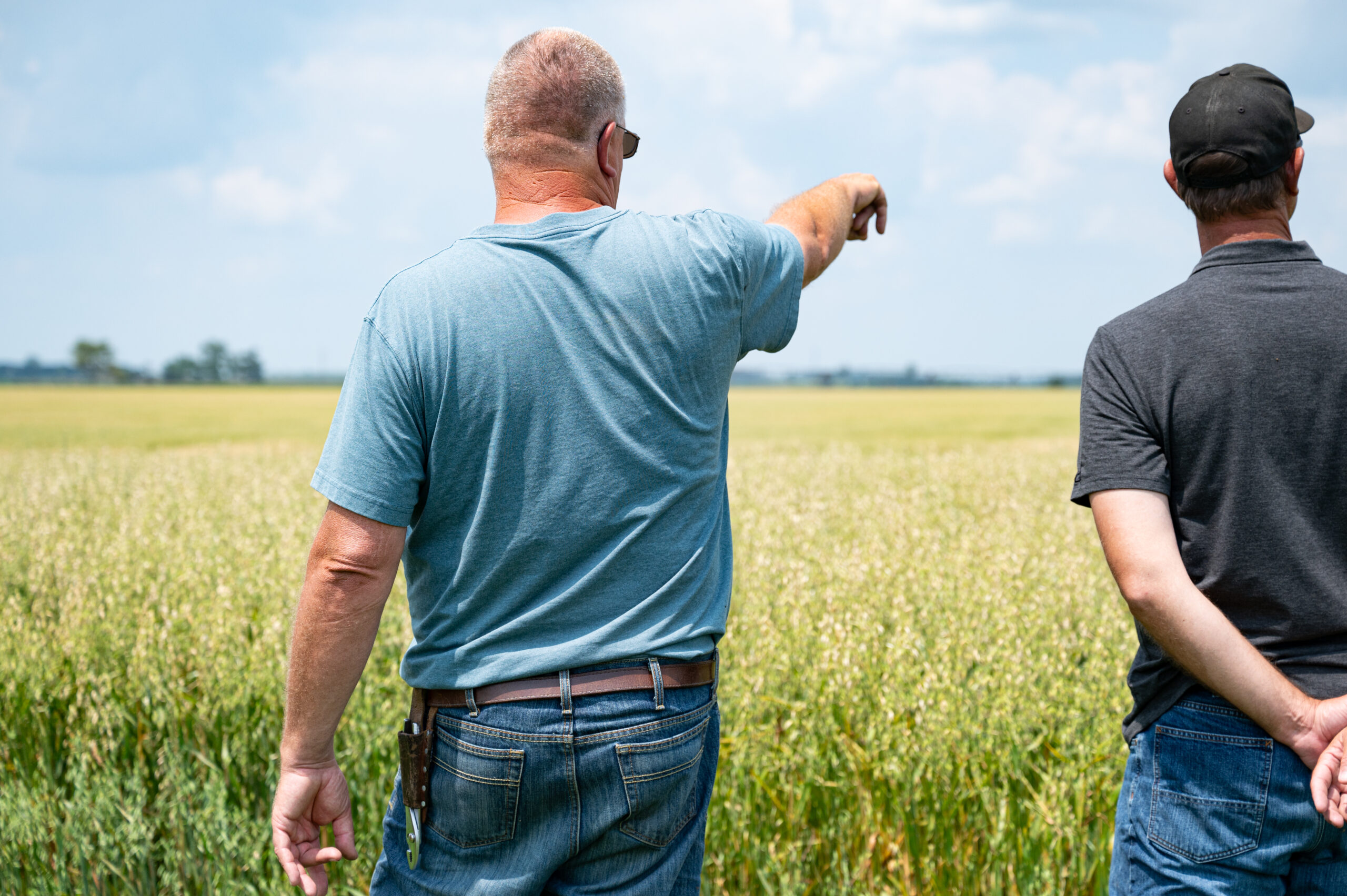
by Sarah Roderick
Sustainability, carbon markets, or even soil health. They might sound like buzzwords, but behind the noise is real opportunity to improve your operation’s efficiency, profitability, and longevity.
In this blog, our team and some of the producers we work with are sharing four regenerative agriculture practices that are making a difference on the ground.
Grazing Management
Rotating livestock frequently to mimic natural grazing patterns is a common regenerative agriculture practice. It leads to healthier pastures, improved forage quality, and better weight gains for your herd. Effective grazing management also enhances root systems and soil structure, making pastures more resilient to drought or heavy rain.
Our Technical Advisor specializing in grazing management, Sheridan Wilson, explains, “Managing forage resources puts ranchers in the driver’s seat of their forage production. So often, we take the grass we have available for granted and focus on other important components of herd management. But, no feed is cheaper than the feed we already have on our ranch and under our feet.”
At AgSpire, we work with you to create a grazing plan that fits your operation – not just for your land, but how you run it too. Whether you’re starting from scratch or fine-tuning what’s already in place, we focus on practical steps that deliver better forage and better outcomes.
Sheridan adds, “Grazing management allows ranchers to meet their grazing and herd goals by measuring what they currently have, creating a plan that works for them, and monitoring and adapting that plan as needed.”
> Why it works: Rotational grazing improves pasture productivity, boosts weight gains, and improves available forage so that you get more out of what’s already under your feet.
Cover Cropping
Cover crops have become almost synonymous with soil health and regenerative agriculture. And, for good reason. Producers are seeing reduced erosion, increased water infiltration, weed suppression, and in some cases, reduced fertilizer needs over time.
But, getting those benefits isn’t automatic. It requires selecting the right species mix for your goals, finding the optimum planting windows, and understanding how and when to terminate. Through programs like Grass is Greener or Covering America, AgSpire’s advisors work with you to add cover crops in a way that makes sense for your operation.
Randy Nelson, a participant in our Grass is Greener program, shared:
“We were looking to add cover crops into some of our pastures, and the Grass is Greener program helped us accomplish this. There was some paperwork on the front end, but the greatest part is the wealth of information you gain by being a part of the AgSpire team.”
> Why it works: Cover crops protect and rebuild your soil while improving water infiltration, suppressing weeds, and can even cut down on fertilizer needs.
Diverse Crop Rotations
Diverse crop rotations aren’t just good for your land; they’re good for your bottom line. Many producers are adding small grains, legumes, or specialty crops. These changes help break pest and disease cycles, improve soil function, and tap into different markets. Through programs like Covering America, which focuses on crop rotations as a key practice, we help assess the agronomics and economics of adding new crops so that your rotation fits your overall farm strategy.
“Adding more options to the crop rotation has multiple benefits,” explains Jared Knock, AgSpire’s VP of Agriculture Innovation. “First off, it balances risk. Planting a new commodity or type of forage spreads labor, resources, and time more evenly throughout the year. Different crop types thrive or falter differently on the weather patterns of the year. So, planting a variety of crop types helps to mitigate that risk.”
Additionally, diverse crop rotations can deter pests and reduce your input costs.
“More diverse crop rotations help break natural pest cycles that are normally fought by commercial pesticides. So, disrupting the cycle with a different crop reduces the need for pesticides and saves producers money on inputs in the process,” Jared added.
> Why it works: Rotating crops spreads risk, improves soil health, and helps break pest and disease cycles.
Edge-of-Field Practices
Field borders, buffers, prairie strips, and riparian plantings are smart ways to get more out of marginal acres. Perennial seedings in underperforming or critical areas help reduce nutrient and water runoff – and can also provide valuable forage and habitat for livestock, wildlife, and pollinators.
Through the Grass is Greener Program, our advisors helped SD farmer/rancher Troy Wipf plant some of his lowest performing acres into perennial pasture.
“Some of the benefits I’ve seen are increased profit,” Troy said. “Long story short, it lets us take out acres that are not profitable and get them healed up, you could say… If I can take out my 10% worst acres, that’s only gonna boost our yields. And that’s very helpful for insurance purposes.”
In addition, it added more on-farm forage for his cattle to graze.
Plus, the benefits go beyond cattle. These areas can also support wildlife like upland birds and deer – as well as the pollinators that play a key role in crop health.
“As part of the five principles of soil health, pollinators help crop health and maturity. Having a diversity of plants helps pollinators by creating better habitat from the additional food sources available throughout the growing season,” explained Derek Ver Helst, Senior Conservation Agronomist at AgSpire.
> Why it works: Turning underperforming acres into perennial forage or habitat protects your resources, adds feed value, and can support your bottom line.

What These Practices Deliver for Your Operation
These regenerative agriculture practices work because they are rooted in how natural ecosystems function. And, the reason that more and more producers are adopting them is because they deliver benefits that matter, like:
- Soil Health: Building organic matter and microbial activity that support long-term productivity
- Water Management: Increasing infiltration and holding capacity to withstand droughts or floods
- Economic Resilience: Diversifying income and reducing reliance on external inputs
- Herd Health: Providing higher-quality forage and healthier grazing systems
How AgSpire Helps
At AgSpire, we help producers move forward with proven practices by providing the right kind of support. Through our programs, we offer:
-
Flexible practice adoption to find what works best for your operation
-
Technical assistance and one-on-one guidance to help you succeed
-
Financial support through incentives and premiums
Whether you’re just exploring new ideas or ready to make a change, our role is to walk alongside you. Not with a one-size-fits-all solution, but with tailored support that fits your goals and your ground.
As Randy Nelson put it after working with us through the Grass is Greener program: “Just talk to them and see what options work for you. They’ll walk you through the programs and help you pick the best fit—and what steps can make the process easier.”
Ready to Implement Practices That Work for Your Operation?
Get started by filling out a Producer Profile. Then, our team will reach out to learn more about your operation and how our programs might work for you.
Additional Links
- How diversity in crops benefits pollinators >>> AgSpire YouTube Channel
- How AgSpire’s programs are helping producers >>> Farm Progress Article
About the Author
SARAH RODERICK
With deep roots in agriculture and a commitment to sustainability, Sarah helps expand the reach of AgSpire’s work. Raised on a cattle ranch in West Texas, she developed a passion for the industry early on – one she has continued to grow through hands-on experience and professional roles. Sarah has worked with the New Mexico Department of Agriculture as a Communications & Events Student Assistant and completed an internship with 44 Farms/Prime Pursuits.
She holds a double major in Agricultural Communications and Agricultural Business/Economics from New Mexico State University.
